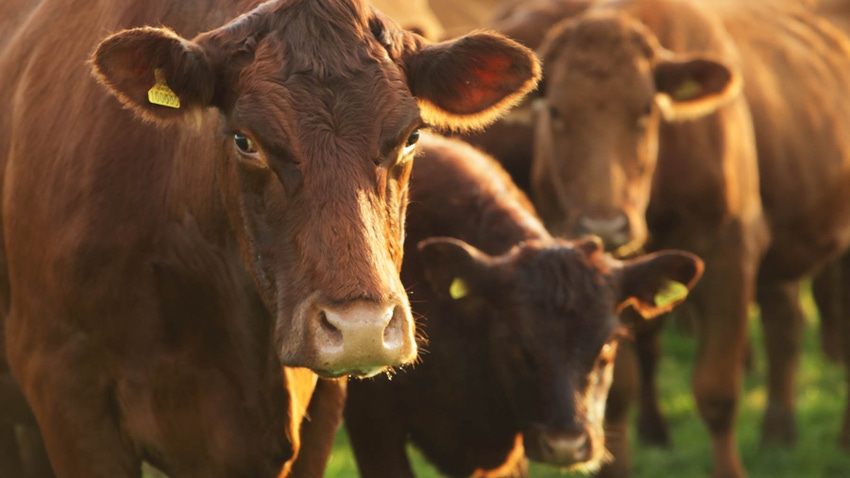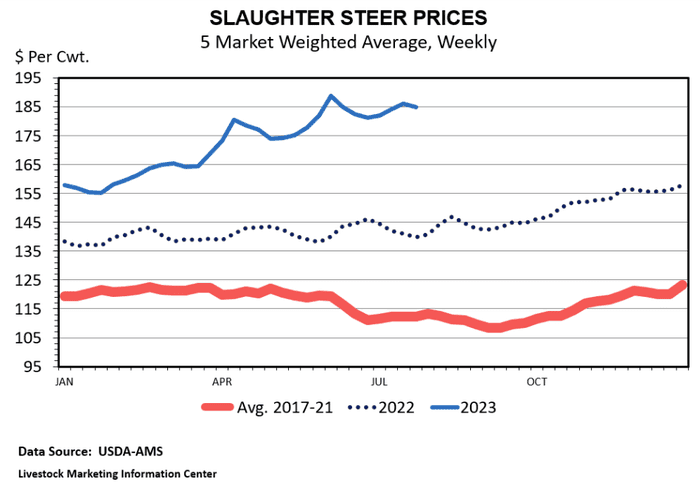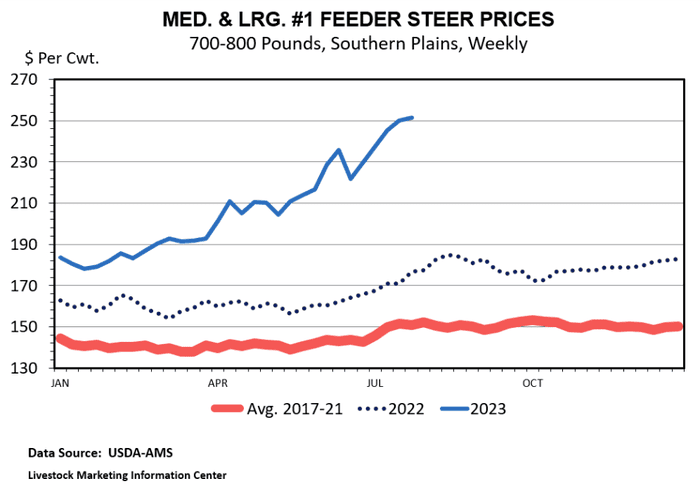August 9, 2023

Cattle growing programs are a key component of the beef cattle sector. Each year a large number of calves are placed into pasture-based and feed-based programs to be grown for a period of time before being placed on full feed for finishing. I always enjoy working with farmers that have these types of operations because they can be so widely different in how they operate.
On occasions when I am able to work with someone who is fairly new to a system like this, they will often ask questions about how long they should keep cattle. As I probe a little deeper, they are often asking how to balance the benefit of adding more lbs per head by keeping cattle longer vs turning cattle over more often and running more total head each year.

There is not an answer to this question that applies to all situations because every operation is different. As I often to do when discussing something like this, I will start by simplifying the world and considering two very different types of growing programs. For the sake of illustration, let’s say that operation #1 pays a premium to buy preconditioned calves that they perceive as being lower risk and feeds them over a period of 4-6 months before reselling them as heavy feeders.
Conversely, operation #2 buys calves that need some attention because they can usually get those calves at an attractive price, and they just expect to deal with some issues early in the program. Operation #2 feeds the cattle for about 60 days before re-selling them.
I laid out these two examples to make the point that while both are growing operations, they are focused on making money in different ways. Operation #1 is probably attempting to buy high quality calves and sell high quality feeders.
Operation #1 is likely focused on adding weight efficiently, so they want to add as many pounds as reasonable on a per head basis. They also know that there are some upfront costs like transportation, health, commission, etc. that will be incurred regardless of how long they keep the calves. By keeping the calves longer, they spread these front-loaded costs over more pounds of gain and strive for high returns per head.
Operation #2 is primarily in the business of upgrading cattle. They are very likely buying calves that operation #1 isn’t interested in, but they are getting them cheaper for that reason. These calves may have been a bit mis-managed and they see an opportunity to add value because of that. They are also likely packaging and reselling them in larger, more uniform groups.
Certainly operator #2 wants the calves to gain weight while they have them, but they sell them sooner because they know they are primarily adding value through upgrading. So, they prefer to turn those calves quicker and find another group to add value to.
Admittedly, this is an overly simple illustration of an economic concept. But I do think it is an important one. The truth is that the industry needs operations that fit into both of these categories as they both provide a valuable function. And there is an entire spectrum of operation types that are needed in the cattle sector.
There are also farmers that may alter their strategy based on the market conditions at a given time. The key point is that a producer needs to have defined goals for their operation and work a program that is right for them. Just because someone else has been successful doing something a certain way, that doesn’t mean that is the only way success can be had.


About the Author(s)
You May Also Like






